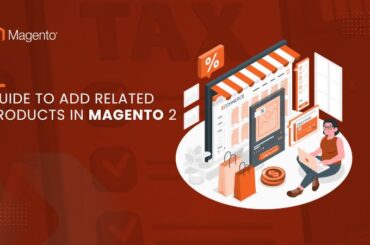Simple Fixes for Magento Issues That Could Improve Your Melbourne Store’s Sales
Last Updated | October 18, 2024
Table of Contents
Australia’s eCommerce market is growing fast, especially in Melbourne, and online shoppers expect quick, smooth experiences. Studies show that even a one-second delay in page load can cause a 7% drop in conversions. Sadly, many Magento stores in Australia struggle with slow load times, poor server setups, and inefficient database management, frustrating customers and causing lost sales.
In this blog, we’ll look at common Magento performance problems affecting your store. By catching these issues early and fixing them quickly, you can speed up your site, improve the shopping experience, and protect your revenue. Optimize your Magento store now to stay ahead in Melbourne’s competitive market.
See Also: Top Magento Website Performance Optimization Tips for Speeding Up Your Sydney Ecommerce Store
Slow Load Times
Magento stores are known for their customizability and feature set, not for their unreliability. Stores suffering from slow load times often hinder the customer experience with high bounce rates and low search engine rankings.
Users do not want to wait for slow-loading pages and move away. Search engines can detect slow-loading sites and rank them lower than well-optimized Magento stores.
The most common causes for slow page load times include:
– Underpowered or overloaded servers that throttle page load times
– Using large, uncompressed image files that take longer to load and slow the page down
– Inefficient and improper code hinders store performance, particularly with large, complex Magento stores.
High Server Response Times
Many services rely on server response times to be as low as possible. Magento stores need quick server response times to improve the user experience.
Users clicking an image or link to a form need an immediate response, and high server response times can result in the following:
– Frustrated users could abandon the store if it takes too long to load.
– Slow-loading websites cost the business their sales because customers opt for someone else.
– Poor user experience leads to low customer satisfaction, damaging your store’s reputation.
High server response times are not an anomaly and can be solved proactively. The best optimization techniques include locally caching frequently used data plans, using a better hosting plan to handle high traffic, or using a CDN to distribute website content across different servers. Making these changes helps improve page load times and server response times, reduce latency, and improve website performance in various locations.
Incorrectly Optimized Database Performance
Magento stores with large catalogs require robust databases to handle product information, media, and other digital assets. An unoptimized database significantly dampens website performance courtesy of inefficient database queries and bloated tables.
The consequences of incorrectly optimized database performance include slower product searches or page rendering delays. This can be attributed to complex database queries or Magento taking too long to retrieve and process store data.
Improving database performance is possible with these techniques:
– Creating indexes for frequently searched database fields that make query execution faster.
– Clearing the database of irrelevant and unnecessary information to optimize its structure.
– Using efficient SQL queries reduces how much data is retrieved and processed.
CSS and JavaScript Bottlenecks
Magento pages’ front and back end rely on high-quality CSS and JavaScript coding. However, Magento stores with heavy CSS and JavaScript files slow down page rendering, leading to higher bounce rates and a negative customer experience. The best solution for CSS and JavaScript bottlenecks involves minifying and combining the files.
Minifying files involves removing all unnecessary characters (comments, whitespace) from the CSS and JavaScript files. Additionally, combining CSS and JavaScript files helps reduce the number of HTTP requests that come in, reduce their file size, and improve load times.
Low-Quality Extensions
Third-party extensions are mainly used to improve Magento store functionality. However, improperly or poorly coded extensions cause more harm than good. Low-quality extensions could add unnecessary code to the store and slow it down. The extensions could conflict with core Magento functionality, making the store unstable.
Using low-quality extensions inevitably results in the store using more resources than required. Inefficient extensions consuming more resources end up slowing down the store and harming the user experience.
Here’s what Magento stores can do to mitigate this:
– Run extension audits that review and assess how well the installed extensions are performing.
– Update Extensions to benefit from performance improvements and bug fixes.
– Remove unused or redundant extensions that are no longer used or have been replaced.
Insufficient Caching Mechanisms
Caching temporarily stores site information to make it available as soon as required. This improves page loading times and is essential to improve Magento store performance. Magento can store frequently used data locally, eliminating the need to recover it each time the user visits – improving page load times. However, there are different caching mechanisms, and using the incorrect one slows down store performance.
With Magento, these are the caching mechanisms you can pick from:
– Full-page caching that caches entire pages (HTML, CSS, and JavaScript) to deliver them quickly to returning visitors.
– Varnish Cache, i.e., a powerful reverse proxy caching solution to significantly improve performance for high-traffic Magento stores.
– Browser Caching helps web browsers store static assets (images, CSS, JavaScript) locally. Doing this reduces the need to download them with every visit.
See Also: Magento Speed Optimization – The Key to Reducing Cart Abandonment in Australia
Conclusion
Fix slow load times by upgrading servers, optimizing images, and cleaning up inefficient code.
Use better hosting, CDNs, and caching to reduce delays and create a smoother shopping experience.
Clean up irrelevant data and improve database queries to make your site faster.
Minify and combine CSS and JavaScript files to boost page speed and reduce bounce rates.
Regularly check for outdated or low-quality extensions and remove unnecessary ones to maintain peak performance.
Implement full-page caching, Varnish Cache, and browser caching to enhance performance, especially for high-traffic stores.
By addressing these common issues and optimizing Magento performance, your Melbourne store can deliver a faster, improved user experience, leading to increased sales and customer satisfaction









